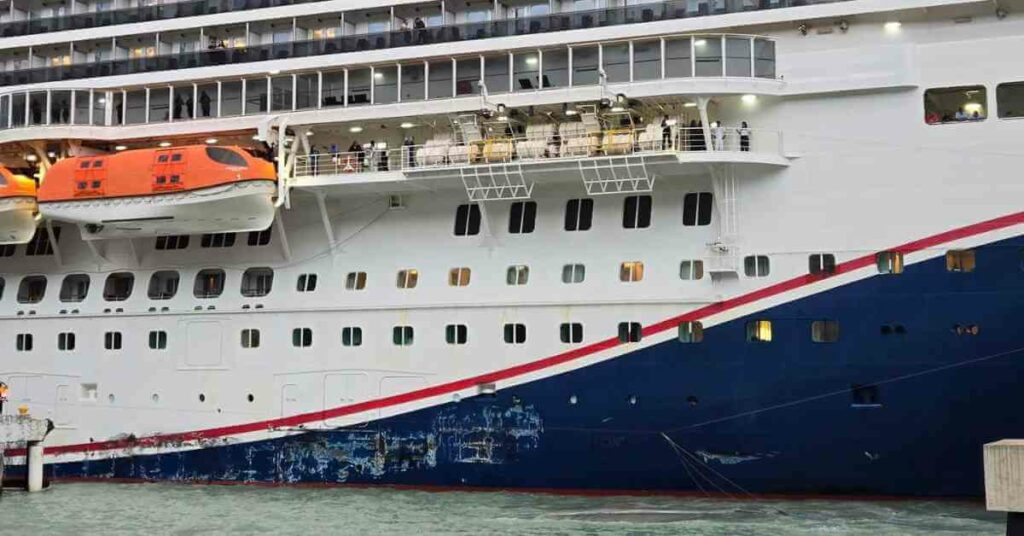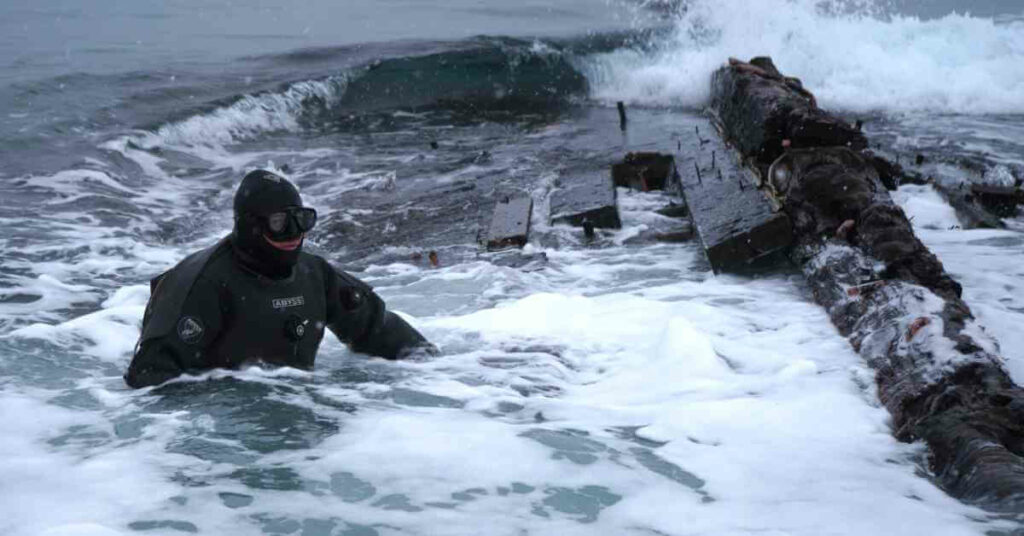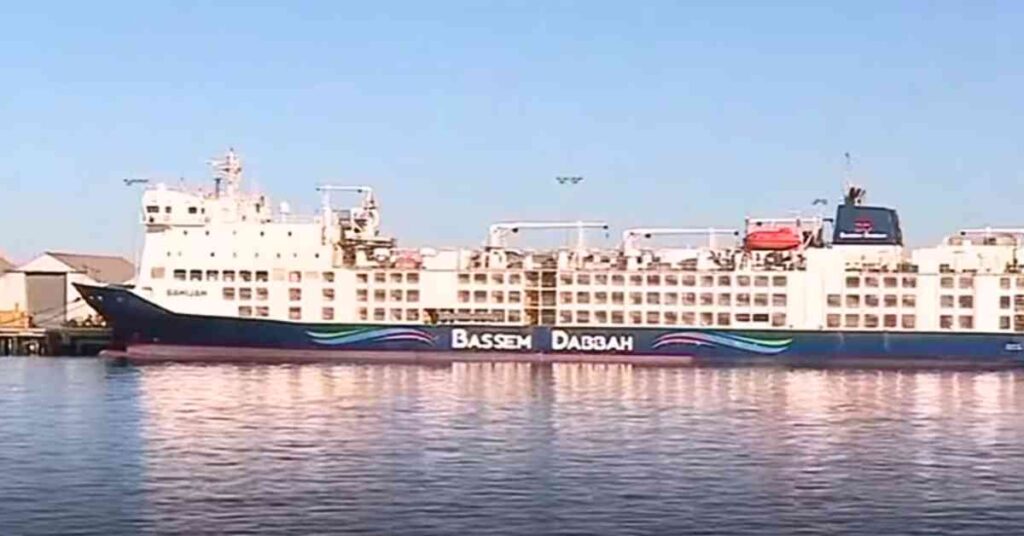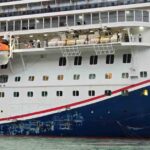Watch: Accommodation Area On A Cargo Ship
The accommodation area is part of the ship used for cabins, dining areas and other crew facilities.
According to SOLAS, the ship’s accommodation area is used for public spaces, corridors, lavatories, cabins, offices, hospitals, recreation rooms etc.
During the early days of ships with sails, the forward part of the ship was used as living quarters for sailors. The fo’c’sle was the home to the crew, where they would sleep in bunks or slung hammocks.
Usually, there was no seating arrangement in this area. Meals were often served on deck, and the sailors would usually retreat inside during foul weather.
Crew members must have proper accommodation facilities to enhance their safety, productivity, well-being and morale.
The accommodation area is usually in the stern part of the ship. It is close to the steering and navigation areas and has access to the engine room.
Most people misunderstand this structure on a ship as accommodation (showing the superstructure in the video). But in fact, it is called the superstructure, which houses the accommodation area along with other necessary spaces such as the navigation bridge, air conditioning room, Galley of the ship etc.
The crew and officers have separate living spaces, usually on different levels, so they can eat, sleep, work and socialise while away at sea.
The accommodation area can be accessed from both port and starboard sides of the ship using weathertight doors, as ships can be berthed along any side.
The accommodation and other spaces in the superstructure are spread across different decks (levels), which can be accessed through alleyways.
Most of the decks have weathertight doors at extreme ends, which are used as the nearest emergency exit, which usually opens to the muster deck or boat deck.
The entry-level deck comprises the ship’s office, where the chief officer and other deck officers interact with cargo planners, port representatives etc. There is a cargo control room, fire control and storage room, stevedore cabin etc., on this level.
A Changing locker room is also provided where the crew can change and store their work outfits post-duty hours.
Depending upon the ship’s size, the engine room access can be from this level or from the deck below.
The below level may also consist of the cold storage and food storage compartments, i.e. veg room, which is kept at a temperature of ~ 5 degrees C, a meat room to keep frozen meat at ~-10 to -15 deg C and a fish room at -20 deg C
At the same level, the air conditioning plant for the accommodation is usually located, which supplies temperature control air to all levels through the system of pipes and trunks.
The above level has the galley and mess room for officers and rating. To provide ease of accessibility, the Galley is usually located at the centre, and the officers’ mess and crew mess is on both sides of the Galley.
Recreational rooms for officers and crew can be located on the same deck or sometimes combined with the mess room in case of space constraints.
The deck above it can have cabins for crew and ratings, and the next-level alleyway will have an operation-level officers’ cabin.
The laundry room for the crew is located at the level with a maximum number of crew cabins. Similarly, the officer laundry room is situated at the officer cabin level.
The officers and crew cabin usually have a bed, chair, table, and washroom attached. The cabin size may change depending on the ship size, as officers’ cabins are usually bigger than the ratings.
One of the crew accommodation decks will have a hospital room known as a sick bay. They are located at the corner of the alleyway to maintain enough separation from other cabins.
The Top two levels will have cabins for management-level officers, which are bigger and usually have a day room apart from the sleeping quarters.
All the levels inside the accommodation can be accessed using an elevator or stairs. Each level of the superstructure is provided with a fire door.
The captain and chief engineer’s cabin utilises a larger part of the accommodation region, which includes sleeping quarters, a dining saloon, an office and a day room. At the same level, few spare cabins are provided for owners or superintendents when they are onboard.
The stairs to go to the bridge are located on this level so that the Master can access the bridge at the earliest when required.
The accommodation area displays different notifications, signs and SOLAS posters to ensure the crew are always aware of the regulations and requirements.
The accommodation on a cargo ship is entirely different from a cruise ship, and the design of the ship’s accommodation is arranged as per the design of the ship’s cargo space.
Disclaimer: The author’s views expressed in this article do not necessarily reflect the views of Marine Insight. Data and charts, if used in the article, have been sourced from available information and have not been authenticated by any statutory authority. The author and Marine Insight do not claim it to be accurate nor accept any responsibility for the same. The views constitute only the opinions and do not constitute any guidelines or recommendations on any course of action to be followed by the reader.
The article or images cannot be reproduced, copied, shared or used in any form without the permission of the author and Marine Insight.
Do you have info to share with us ? Suggest a correction

About Author
Zahra is an alumna of Miranda House, University of Delhi. She is an avid writer, possessing immaculate research and editing skills. Author of several academic papers, she has also worked as a freelance writer, producing many technical, creative and marketing pieces. A true aesthete at heart, she loves books a little more than anything else.
Latest Videos Articles You Would Like:
- Cruise Ship Damaged Due To Severe Weather, Passengers Stuck Abroad
- Archaeologists Examine 19th-Century Shipwreck Found On Canadian Coast
- Australia Stops Livestock Ship From Sailing Around Africa To Israel Amidst Houthi Attacks
- Iran Warns U.S. Of Targeting Cargo Ships Following Latest Airstrikes On Houthis
- Watch: Ukrainian Forces Destroy Russian Missile Boat In Black Sea Operation
- Two Dead After Tragic Collision Between Water Taxi And Passenger Ferry In the Philippines
Subscribe To Our Newsletters
By subscribing, you agree to our Privacy Policy and may receive occasional deal communications; you can unsubscribe anytime.















